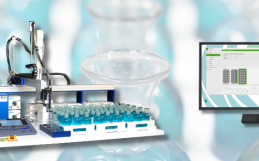PeCOD Efficiency Identifying Pollutants
The water in our households, restaurants, and more, rely on wastewater treatment plants to process and purify the water of pollutants. Without removal, pollutants in this wastewater can be critically harmful. The process of water treatment plants is special, allowing the extermination of all physical, chemical, and biological pollutants that arise in the water.
There are seven main water pollutants, in which only few are commonly known. By acknowledging and identifying all seven pollutants, we can start holding ourselves accountable to reduce these pollutants.
7 Main Water Pollutants
Gasoline
Oil is a big player in this world’s economy. It is also one of the biggest in water pollution. Oil leaks into water supplies such as sewers, rivers, lakes, and oceans. A small sample size of four liters of gasoline can stretch to produce 3 billion liters of contaminated water.
Batteries
Household batteries used for fire alarms, remote controllers, and toys should for no reason touch our water sources. Batteries can be saved and later placed for recycling. The danger of these batteries is their make up:
– A pile of mercury can contaminate 600 thousand liters of water.
– Alkaline batteries can contaminate 167 liters of water.
– A pile of silver oxide can contaminate 14 thousand liters of water.
These small items can do some serious damage.
Petroleum
Petroleum is not usually used in its pure state, but items such as Styrofoam and plastic are used making it one of the most polluting elements.
– A single drop of petroleum can contaminate 25 liters of water
Car Oil
A car requires an oil change after every six months or every 5000 Km. The oil change can be done by the owner themselves or by a local mechanical center. After changing the oil what do you think happens to the used oil?
Unfortunately, many times it is disposed of in the sewers. This is serious, as a liter of car oil can contaminate up to a million liters of water.
The bright side is that this contamination can be avoided. By placing the used oil in a plastic bottle in a cool location, it can be stored until taken to an authorized mechanic where it can be recycled!
Domestic Oil
Cooking oil is the most present form of domestic oil. Small consumption amounts avoid problems for both our health and the environment. When larger batches of oil are used, steer clear of pouring the waste down the drain.
Detergent
Detergent is found in 50% of wastewater due to the high domestic usage rate. Dish soap and laundry detergent are used constantly by all around the world.
Cigarette Butts
When walking down the street how many cigarette butts can you count thrown on the road? These butts are flushed or pushed to drains by rain and wind, ultimately ending up either at a treatment plant or into a river or sea.
A cigarette butt can contaminate 8 liters of water.
After reviewing these seven pollutants, it should be obvious how pollutants are all around us. Is there a way to optimize water treatment and pollutant identification? Yes, with the PeCOD Analyzer!
The PeCOD utilizes a green and environmentally friendly method to determine BOD5 and COD pollution in water and wastewater. BOD5 is a test involving a 5-day incubation of sample with microbes, measuring the depletion of oxygen directly resulting from the biological activity facilitated by the organic matter in the sample. Samples containing higher concentrations of organic matter provide more ‘food’ for microbes, resulting in greater microbiological activity, leading to greater oxygen depletion. COD is a similar measure of organic matter and oxygen demand; however, the method of oxygen depletion is through chemical oxidation reactions as opposed to biological activity. In just 10 minutes, the PeCOD can produce BOD5 and COD results, allowing for the identification of pollutants quickly and easily.







